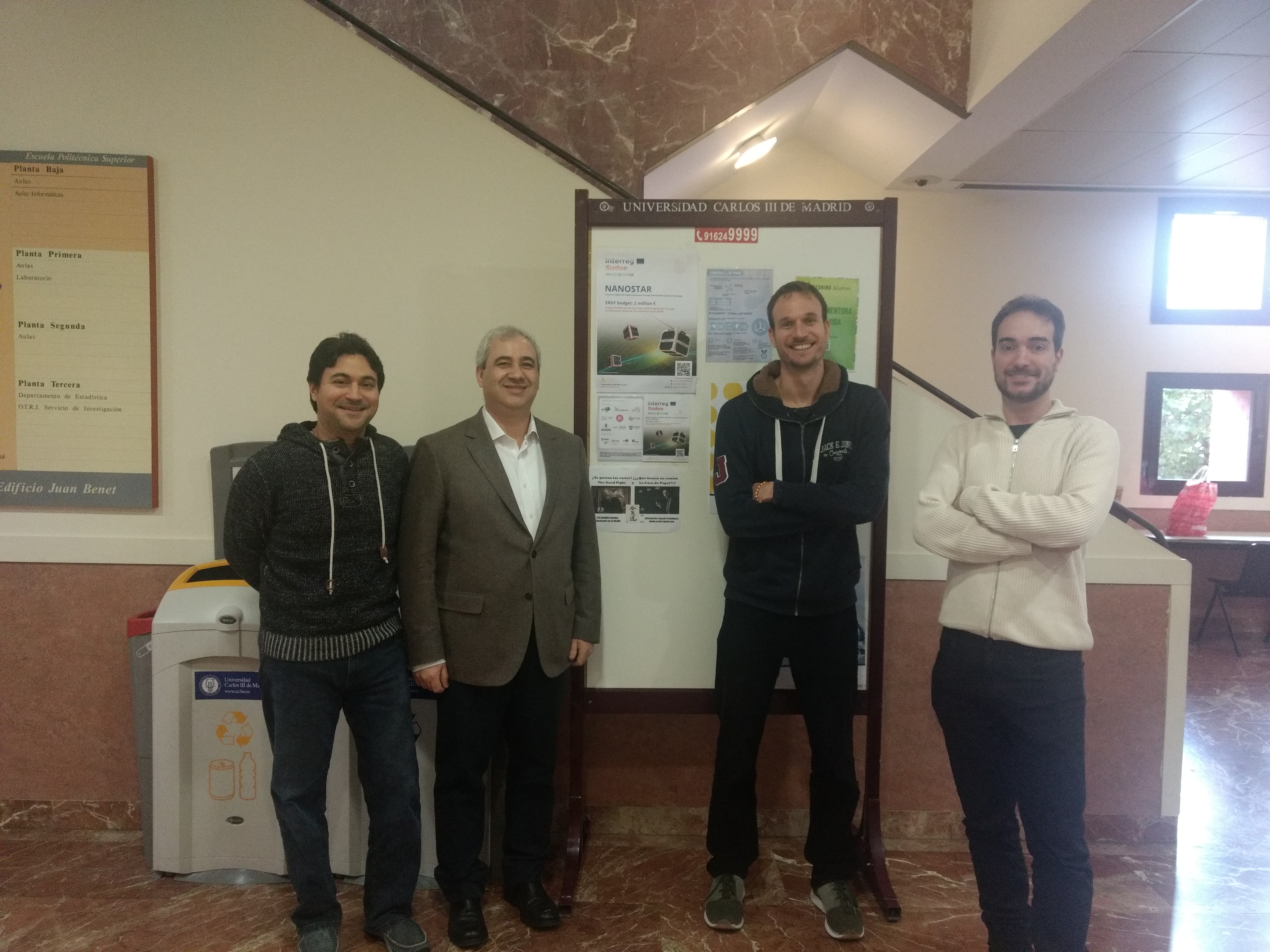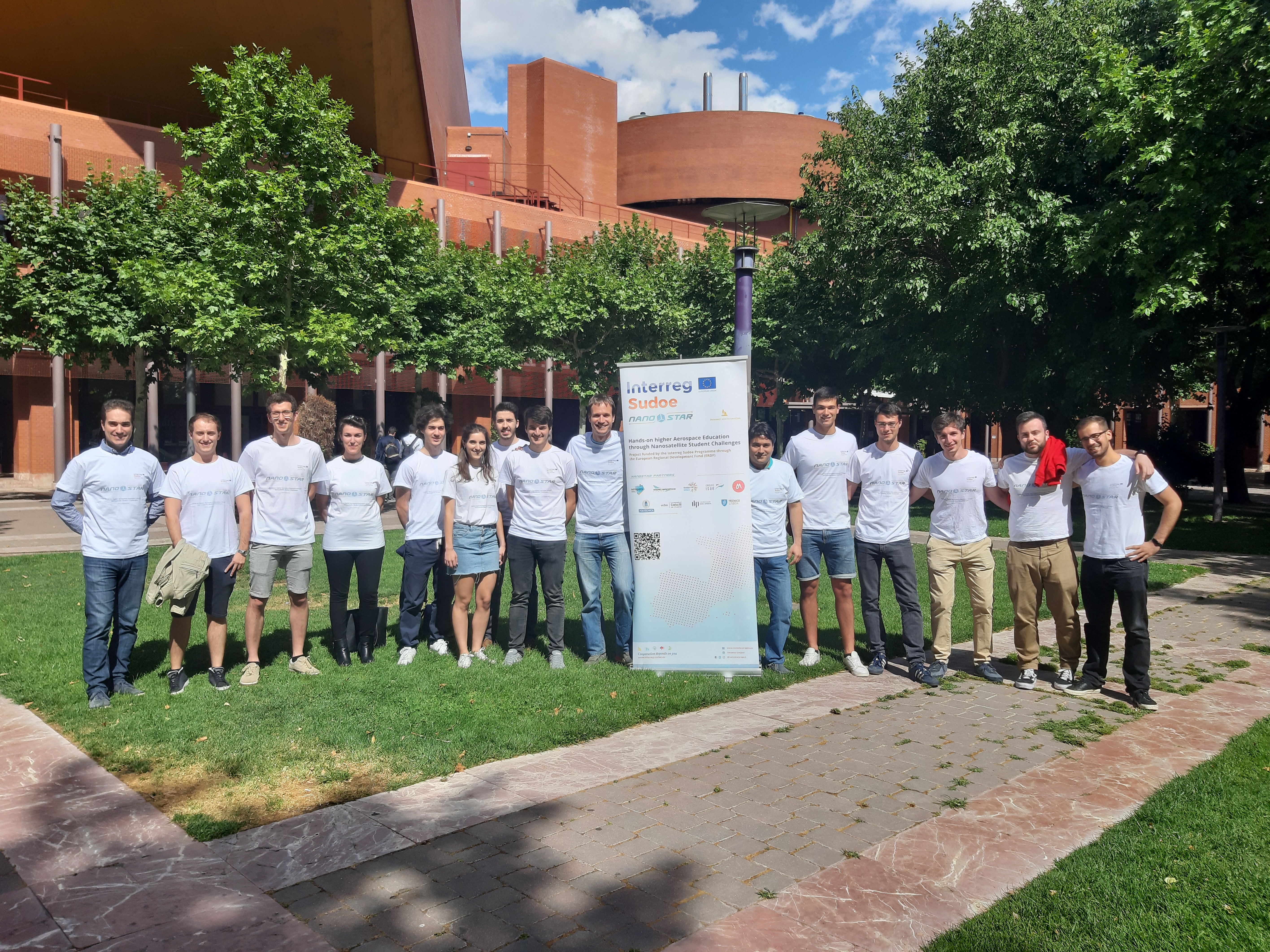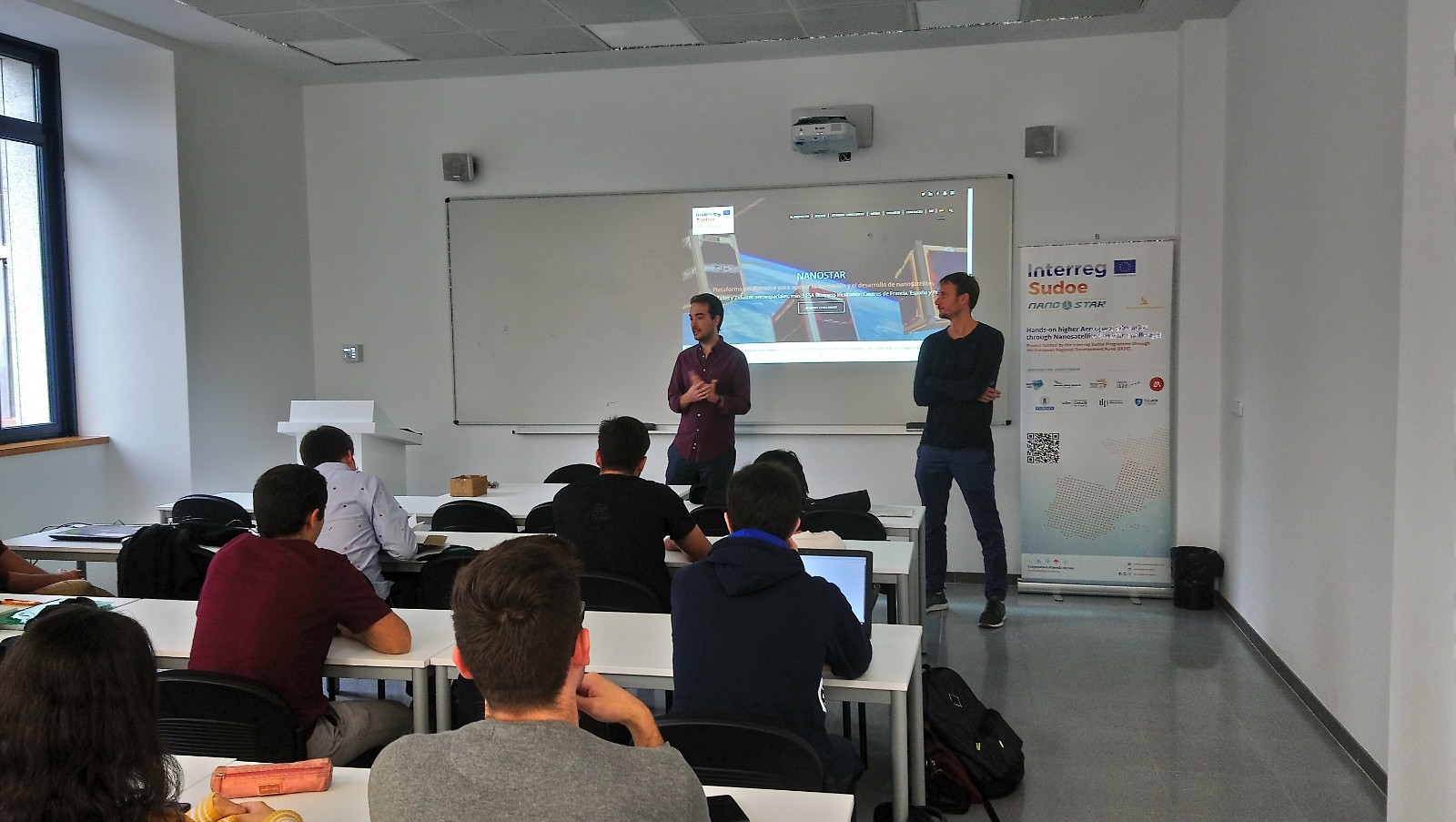Communication
Sudoe News
30 years of Interreg: youngsters closer to the moon thanks to NANOSTAR. Interview with Filippo Cichocki
Categoría Management of projects approved
This year Interreg celebrates its 30th birthday, focusing on three topics of interest for the European cohesion: youth, a greener Europe and we all have a neighbor. In this context, each month, we will interview one of our emblematic projects related to one of these topics.
This month we spoke with Filippo Cichocki, visiting professor at the Carlos III University of Madrid who, together with his colleague Julio Posada Román and the professors José Antonio García Souto and Mario Merino Martínez, coordinate the challenges for students of the NANOSTAR project. NANOSTAR offers to university students the possibility of experiencing a real and complete space-engineering process that includes conception, design, assembly and documentation. In teams, students can draft a space mission with a nano-satellite and create parts of it.

- What role do young people play in your project?
The NANOSTAR project is based on several challenges according to which the role of young people varies. Some challenges are competitive: students register to compete for the preliminary design of a nano-satellite mission. Organized in groups, they design the principal subsystems of nano-satellite in order to accomplish this mission and compete with other groups of students from their same university or from other universities participating in the NANOSTAR project. Moreover, there are other types of challenges, more independent, organized by the universities of the project focusing on the development of a particular technology for nano-satellites. This can be a communications component, a control strategy or a testing platform. Since the project has a wide nature, the activities developed for the challenges vary as well.
- How important are these challenges for the proper development of the project?
The two types of challenges of the project present significant activities for a space engineer.
On one side, the competitive challenges look like the procedures of the European Space Agency for the selection of promising space-mission proposals that can be financed for the phases of detailed design and finally reach the operational phase. The first challenge was a competitive challenge. Developed between February and May 2019, it consisted of a flyby mission to the moon with a nano-satellite. Counting with the participation of 15 teams, it brought together more than 100 students. The second competitive challenge has just ended and focused on a different mission: a payload mission, with Roscoff worms that allow to recycle CO2 and produce O2, very useful for the development of ECLSS – Environmental Control and Life Support Systems.
On the other side, individual challenges will start in the next weeks and will allow students from each university to advance in concrete skills related to detailed phases of a nano-satellite design. These usually start when the preliminary design of a mission is approved and a space agency, such as the European Space Agency, decides to continue financing these activities. So far, we organized around 30 different challenges among all the universities involved in NANOSTAR project.
- Where does the idea of NANOSTAR come from? What is the added value of having young people in this project?
It is a great added value. First, young people interested in this sector are very motivated and have a lot of passion for what they do. Even if they don't have a very long experience, they are able, with advice, to perform very advanced engineering tasks.
On the other hand, in NANOSTAR, we believe in hands-on education, thanks to which students develop all the competences for their future job as space engineers. In this sense, the nano-satellites presents a clear asset, not just as an educative tool, but also for the intrinsic interest that students develop for this type of industry that in the last years has certainly grown. Finally, and this is the a reason for a SUDOE project, there is a technological gap in South-West Europe of this specific technology and there is no better way to bridge this gap than to bet on the training of young people.
- What does NANOSTAR provide to the youngsters who participate?
It is a very positive point for your curricula to be able to participate in a public competition for the design of a nano-satellite, financed by the EU and with a strong participation. In addition, the project benefits from experts’ advices of prestigious universities. Participating to these challenges allows students to develop knowledge that may not be developed in an ordinary university course. They can put into practice their knowledge developing a space mission, systems engineering, managing of special projects or in the detailed design of a nano-satellite component, while learning to work in a team with other European students. The challenges teach them to be patient, rigorous, organizing periodic meetings to progress with the design, knowing how to respond to casualties in the team.
- How do you organize work in universities of different countries?
Each University has its own work culture and their area of expertise, so they complement each other. Generally, the student groups are from the same universities but we also had interuniversity groups. This is very positive because it allows us to evaluate whether it is possible to work as a team from different universities and what difficulties it entails. Obviously, physical distance can be an obstacle, but through the project, we seek to develop common work methodologies. Thus, we develop a common software to design nano-satellites, with the same tools, homogenizing the nano-satellite development process.
- What is the profile of the students participating?
They are mostly space-engineering students but we count also on students from other disciplines. This is essential because space engineering is totally interdisciplinary. Design involves different fields of knowledge. Thus, for example, electronic, telecommunication engineers but also mathematicians participate.
We also count on a gender mixed participation even if we have not reached yet the desired level of equality: in the last challenge, for example, about 80 people participated, of which approximately 20 were women. This figure is in line with the percentage of women in engineering department of Spanish universities (around 25%).
On the other hand, many universities have student associations dedicated to solving technological problems. We made the most of these by encouraging their participation because they are probably the best candidates since they have very motivated students, with a lot of practical experience and seek to achieve greater visibility. For example, we are developing one of the challenges with the STAR association of the Carlos III University that is dedicated to the development and launching of rockets as platform for the testing of nano-satellite components.
- How do these types of projects influence the vision that young people have of the EU? How would you encourage young people to participate in the project?
The participation in this kind of networks allow to expose students to the education method of other countries and establish contacts with other similar students in South Europe. We believe that actions like these ones are very positive for foster the youngsters’ sense of belonging in the European Union. They link Europe with opportunities to develop concrete projects.
Without a doubt, NANOSTAR is a great opportunity to put into practice what they are learning in their academic training, work as a team and develop skills to work in the future in a more connected Europe.
Thank you very much Filippo! Do not hesitate to visit the project website and discover everything about space challenges. Also, we invite you to discover the testimonies of Alejandro and David, two students from Carlos III University who participated in the challenges.





